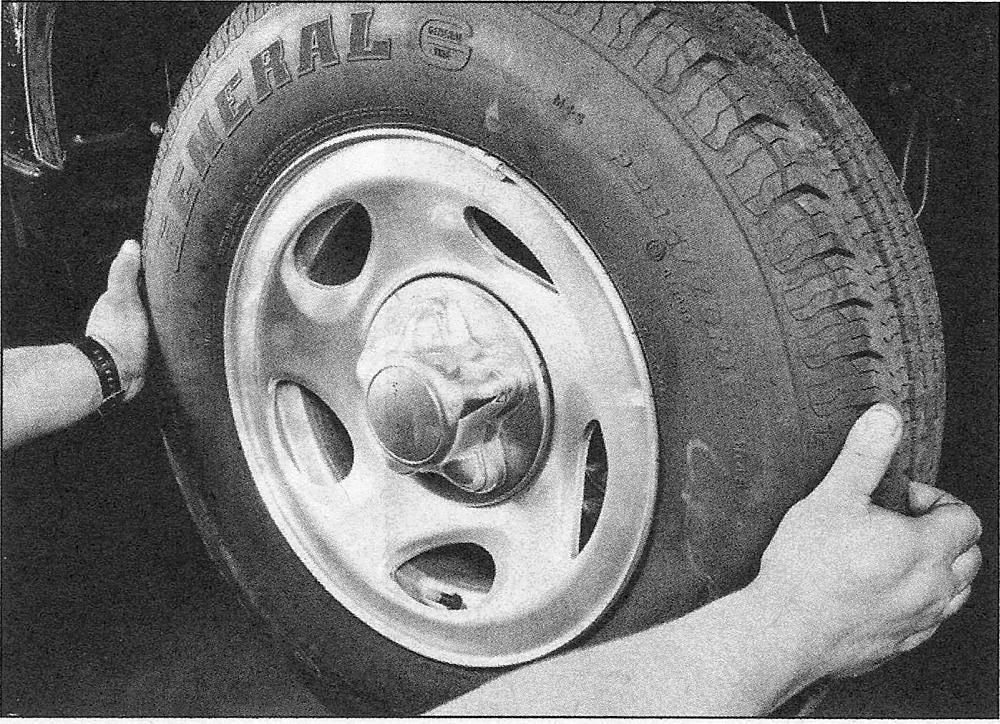Inspect the steering and suspension components Ford F150
Note: The steering linkage and suspension components should be checked periodically. Worn or damaged suspension and steering linkage components can result in excessive and abnormal tire wear, poor ride quality and vehicle handling and reduced fuel economy. For detailed illustrations of the steering and suspension components, refer to Chapter 10.
Shock absorber check
1. Park the vehicle on level ground, turn the engine off and set the parking brake. Check the tire pressures.
2. Push down at one corner of the vehicle, then release it while noting the movement of the body. It should stop moving and come to rest in a level position within one or two bounces.
3. If the vehicle continues to move up-and-down or if it fails to return to its original position, a worn or weak shock absorber is probably the reason.
4. Repeat the above check at each of the three remaining corners of the vehicle.
5. Raise the vehicle and support it securely on jackstands.
Check the shocks for leakage at the indicated area (rear shock shown)
6. Check the shock absorbers for evidence of fluid leakage. A light film of fluid is no cause for concern. Make sure that any fluid noted is from the shocks and not from some other source. If leakage is noted, replace the shocks as a set.
7. Check the shocks to be sure that they are securely mounted and undamaged. Check the upper mounts for damage and wear. If damage or wear is noted, replace the shocks as a set (front or rear).
8. If the shocks must be replaced, refer to Suspension and steering systems for the procedure.
Steering and suspension check
Inspect the steering and suspension components for torn grease seals (arrows)
Check the stabilizer bar and link bushings for deterioration at the front and the rear of the vehicle
9. Visually inspect the steering and suspension components for damage and distortion. Look for damaged seals, boots and bushings and leaks of any kind.
10. Clean the lower end of the steering knuckle. Have an assistant grasp the lower edge of the tire and move the wheel in-andout while you look for movement at the steering knuckle-to-control arm balljoint. If there is 1/32-inch or more movement the suspension balljoint(s) must be replaced.
With the steering wheel locked and the vehicle raised, grasp the front tire as shown and try to move it back-and-forth — if any play is noted, check the tie-rod ends for looseness
11. Grasp each front tire at the front and rear edges, push in at the front, pull out at the rear and feel for play in the steering system components. If any freeplay is noted, check the tie-rod ends for looseness.
12. Additional steering and suspension system information and illustrations can be found in Suspension and steering systems.



